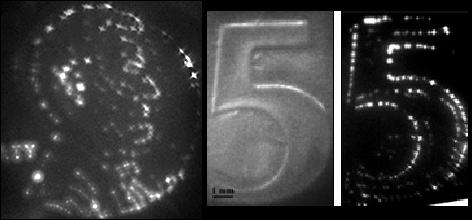Parts of the component emit light to illustrate the texture changes

A device that may pave the way for robotic hands that can replace the human sense of touch was unveiled this week. This is according to the scientific journal Science. American scientists have created a sensor that can "feel" the texture of a bone with the same degree of sensitivity as the fingers of the human hand.
The team stated that the tactile sense sensor could in the future help minimize the invasive surgical methods by providing sensors to surgeons that would give them an experience of real touch.
"The problem with these systems in their current state is their ability to detect texture with a resolution of a few millimeters," said Prof. Ravi Saraf, an engineer from the University of Nebraska in Lincoln and one of the authors of the article. And he added that "the human finger can sense differences in size of 40 microns, about half the diameter of a hair, and this affects the performance of the devices."
However, Prof. Saraf and his colleague Dr. Vivek Mahashwari, also from the University of Nebraska, managed to achieve a high level of accuracy by developing a thin film consisting of layers of metal and semiconductor nanoparticles connected up and down by electrodes. When the film touches a surface, any pressure or tension will squeeze the layers of particles together. This will cause the current in the film to change and emit light from the particles, a phenomenon known as electroluminescence. The visible light is captured by a camera.
The beauty of this is that we were able to build components in such a way that the amount of changes in the current, and therefore in the light, coming out is proportional to the pressure exerted on the film," said Prof. Saraf. To achieve high sensitivity in the device, the scientists placed a one-cent coin against it. The sensor revealed the crease in President Lincoln's clothes and the letters TY in the word LIBERTY.
Prof. Saraf says that his film, in addition to the fact that it matches the sensitivity of the human finger, is also flexible and stable enough that it can be reused. He also said that the device could be used for medical applications. "The hope is that if you have a resolution similar to that of the human hand in applications such as minimally invasive surgery, when the surgeon can actually "touch" while he is performing the surgery and know if the tissue is cancerous, abnormal, etc., something that will make it possible to increase the success of these surgeries.
Prof. Saraf added that he is now trying to create a device that will detect changes in temperature, and not just in texture, and will thereby allow for a better imitation of the feeling of the human finger.
